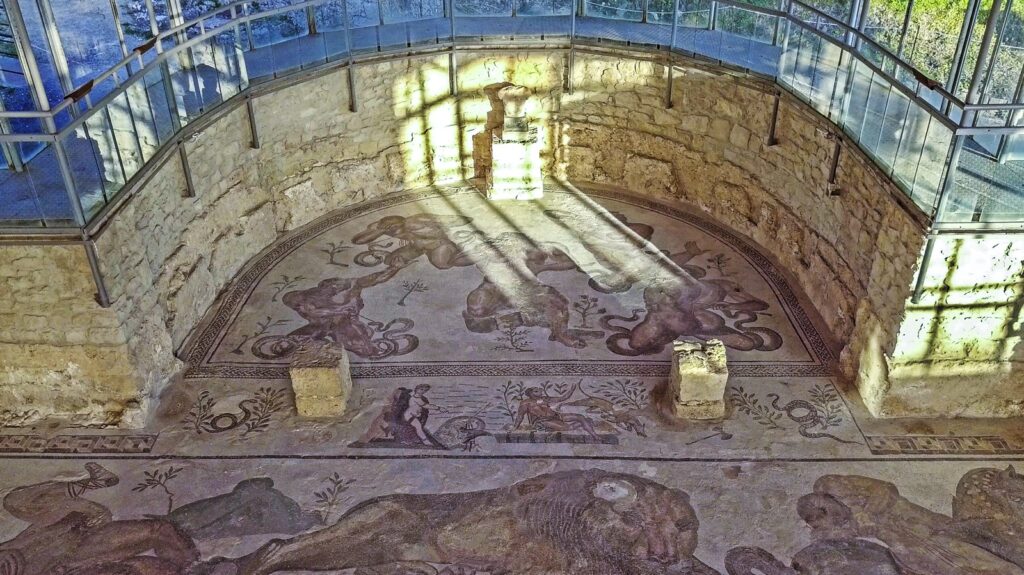The triclinium can be considered the dining room of the Roman domus, and refers more to a reception room for guests. Its name comes from its furniture, consisting of lecti triclinaris, i.e. large sofas that could accommodate up to three people, where the Romans would eat lying down.
The hall, which varied in size according to the rank of the owner, was organised so that the lecti could be placed on three sides and the fourth was left free to serve meals.
The centre of the room was empty of furniture to allow the courses to be brought in; in the most luxurious residences, the central part was dedicated to performances, which the dominus would offer to his guests during banquets.
In the Roman villas the triclinium was located in an easily accessible area, with a wide connection to the outside, sometimes a second courtyard with a viridarium that formed the backdrop and where outdoor performances could also take place.
The shape of the room was always almost quadrangular; in the late antiquity, the spread in the trend of the sigma couch, the stibadium, favoured the development of rooms with apses on three sides for the lecti, in order to obtain a wider and unobstructed central space. In this case, the triclinium is called the triapsidal hall or sala tricora.
